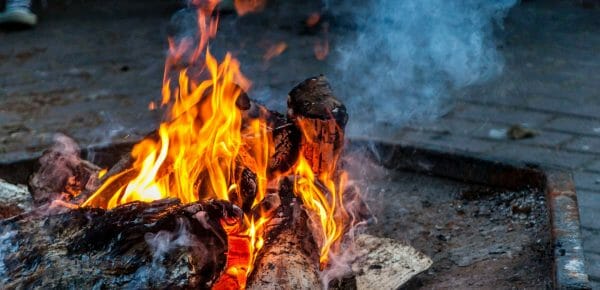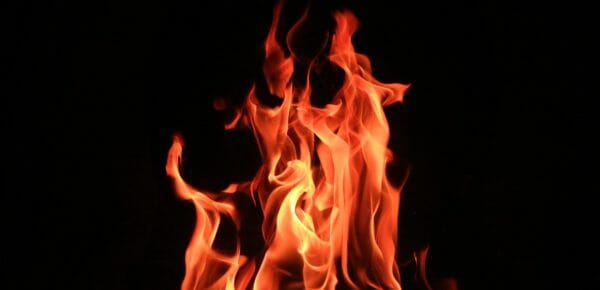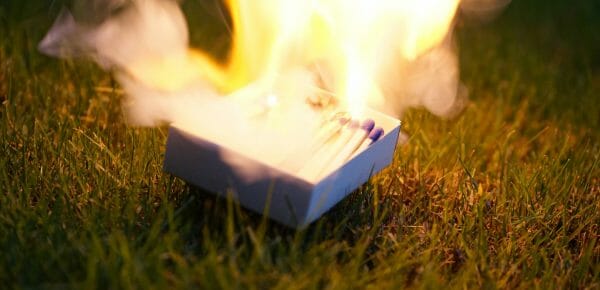Hidden fire hazards lurking in your home
From fire drills in school to very special episodes of our favorite shows, we are constantly reminded of fire safety. But far too many people leave their fire safety concerns at work or school. They don’t think about fire hazards right in their homes.
We hear the term so much that we often don’t stop to ask ourselves what is a fire hazard? The most all-encompassing fire hazard definition is anything that increases the likelihood of a fire breaking out or of making fires more intense. They can be conditions or materials. Some fire hazards are behaviors!
Creating a home fire hazard checklist as part of your home’s fire escape plan is a great idea. If you aren’t sure what you should include on your list, here are some common household fire hazards that you can look out for.
Common Fire Hazards
There are several different types of fire hazards. Some hazards will feel obvious, some may surprise you. But by better knowledge about these common fire hazards, you’ll be able to make your home much safer.
Wire Fires
Our lives are full of wires. Unsurprisingly, there are several ways wires can become fire hazards. It’s important to be aware of what wires you’re using and where they are located.
Exposed wiring—that is to say wires that have been stripped of their insulation—can be very dangerous. Exposed wires can spark, even when the devices they connect to are working well. When those exposed wires are inside a wall, those sparks can catch and you’ve got a fire inside your walls.
How do wires inside a wall get exposed?
Pests may chew on them, or they could get exposed by someone putting a screw or nail into just the wrong spot when hanging a picture or some other large memento.
If you have never checked on the state of your wiring, you should bring a licensed electrician in for a consultation. They can let you know if your wiring is safe and may even improve your fire safety by replacing your old circuit breaker with a surprisingly inexpensive arc-fault circuit interrupter. These are considered to be safer alternatives because they cut circuits before they short.
Why does a short circuit cause a fire?
You may be asking why does short circuit cause a fire from your wires? It’s because a short circuit occurs when too much current flows through a wire or when two bare wires touch. The heat from heavy current or the sparks from those intersections can light your house up. Arc-fault circuit interrupters break the circuits when short circuit conditions are present, ending the threat.
But wires inside your wall aren’t the only dangers! Frayed cords for phone chargers or antique appliances can also spark, causing a fire. These exposed wires are much simpler to spot. In the case of phone chargers, when you see the wires start to fray, replace the charger. When it comes to antiques, it is often safest to simply keep them unplugged. If you decide you want your antique to operate, keep a close eye on the wiring. If you aren’t sure that the wiring is sound, bring it in to be rewired.
Another potential source of overheating or spark generation can come from loose outlets. If your plugs aren’t staying plugged-in, replace the outlet cover as soon as you can. It is inexpensive and can prevent a nasty fire.
Kitchen Fires
Around 41 percent of house fires start in the kitchen. The temperatures required to cook are high and if you have a gas stove, you’ve got super hot open flames all the time.
Many fire hazards in the kitchen could be classified as clutter fire hazards. When the area around a stove is not kept clear, kitchen towels, cookbooks, or even some foods can wind up over a hot burner and catch fire. To prevent this, it’s very important to keep three feet of clearance around your stove. Better safe than sorry.
When cooking with gas, it’s doubly important to stay vigilant. Food spilling or grease spattering on or near a gas burner can turn into a bad fire quickly. When you’re cooking it is imperative that you pay attention to what is on the stove.
An Ounce of Maintenance, a Pound of Prevention
Sometimes a fire hazard isn’t a wire. A fire hazard can be as simple as sawdust. While many types of dust can be flammable, sawdust can be particularly hazardous. After all, it’s made of kindling. If you have a craftsperson in the house, make sure to invest in a vacuum designed specifically to clean up combustible dust, and be sure to use it regularly.
Another little thing that can become a big deal can be found in your dryer. It’s common knowledge that cleaning the lint trap between loads is important, but what many people don’t realize is that lint traps don’t catch everything. Lint can build up around the trap and into the dryer’s vent tube. That lint is combustible. Clearing the lint out of your entire dryer system is an important step you should take every two years or so.
A fire hazard is not just a flammable material…
Just to reiterate, a fire hazard is not just a flammable material. Conditions that can make a fire worse are also fire hazards. That means that keeping an untested fire extinguisher is a fire hazard. If you have an extinguisher but you haven’t had it checked in a year, it may not do you any good if a fire breaks out. Make sure your fire extinguisher is checked by an expert and that you keep it in an easily accessible spot—preferably near your kitchen since that’s the most likely place a fire will start.
One of the most common fire hazards is expired or removed batteries in smoke detectors. If your smoke detector doesn’t have working batteries, it won’t be able to perform its function. How often should a smoke detector be tested? You should test your batteries once a month, replace them twice a year, and replace the entire smoke detector every ten years. Don’t ignore the little chirp that comes when your smoke detector battery is low. Replace it right away!
Control the Fire Hazard Variables
If you still aren’t sure about how to identify fire hazards, you can check in with your local fire department. Find their non-emergency contact information and connect with the people in your area who understand fires best. Some departments can even provide fire hazards in the home worksheets or help you make one for yourself!
Use Your Common Sense
The key to fire safety is common sense. If you like to light candles or use a space heater, keep the areas around them clear. If you have a fireplace, make sure the chimney is clear of potentially combustible materials like soot buildup. Be aware of the things in your home that can be fire hazards or even hazards that can be created by fire. Recognize the importance of having a fire escape plan.
All of these things seem like they go without saying, but deadly house fires happen every day. Reduce your risk from an unmanaged fire hazard in your home by taking steps to address fire safety for you and your family today.
FAQ
What is a fire hazard?
A fire hazard is something that contributes to the start of a fire or the worsening of an existing fire. Fire hazards can be materials, conditions, or even behaviors.
What are fire hazards in the home?
These are materials or common conditions in a home that can lead to a fire starting or the worsening of an existing fire. For example, exposed wiring is a dangerous fire hazard in the home.
Is paper a fire hazard?
On its own? No. But if papers are piled up near a stove or around a space heater or falls on a burning candle? Yes, absolutely.
Is dust a fire hazard?
Many types of dust are technically fire hazards. Dust contains lint and skin cells and all manner of combustible elements. The most combustible dust, though, is sawdust.



